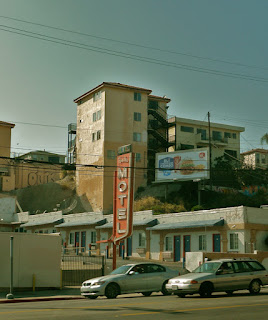Except for a few boy and girl geniuses, we've all asked silly questions at some point or another. Actually, it is true there are no silly questions except when they are repeated . I saw a funny t-shirt that aimed to answer common questions asked to plein air painters from people that walk by and have the blessed curiosity to ask. This got me thinking about innocent, annoying or just plain repeated comments uttered by painters and workshop attendees. Many of them based in preconceptions. I've made similar comments so this isn't meant to embarrass anyone. It's about seeing the humor in their recurrence.
SOLD IT! Gone to a good home.
All in capitals. Like the ding ding ding of a casino slot machine. While sales are a wonderful validation and it is so very hard not to share your success this has to be the worst offender on Facebook. At least I find it a bit off, may be I'm wrong. Unless you are a gallery owner showing off your market prowess or the lucky seller is taking us for dinner I wonder what purpose loudly announcing sales really fulfills. Is it just just braggin'? Creating the impression that you better hurry or you'll miss out if you are a patron? If the announcement is accompanied by the actual monetary value, I'd say that would be great information, I am not advocating any sort of "discrete classiness", being an artist is a business too. This business aspect of being an artist interests me greatly, what about sharing your business plans? What about sharing your struggles, monetary or otherwise? Now THAT would be worth reading abbout. As for the "good home"...what are you selling...puppies? You know you'd sell a painting to a mafia overlord/lady if he/she came knocking.
What colors did you mix to get that color?
The eternal search for the recipe. It takes time and color charts to know your colors. Moreover, a color is meaningless unless another color sits beside it. The same grey can be a shiny green in one canvas and a neutral mud in another. While color mixes can be interesting, it is not a paint by numbers world. The formula that makes a good painting for one is the kiss of death for another. That's why we practice incessantly.
Similar to this is the issue of priming colors.
"I always prime my canvas bright red (or any other color)." Self-imposed habits and rules are great but there has to be a why behind them.
Similar formulas abound. For example:
"Adding people sells paintings.".People and human figures
add a certain scale and narrative accent to paintings of landscape.
But like highlights on a glass bottle, the more you abuse this formula,
the more you start to rely on it and things go downhill in a hurry.
People, highlights, they all are compositional elements, not something
to be "added" to guarantee sales.
"I hate to paint cars/cows/people..."
I think when people say they hate painting something specific like cars what they really are saying is: "I don't know how to see cars as a painter yet, I still see them as things and not as light and shadow." This is actually a great opening for teaching. Of course our hearts go to certain subjects, cats, flowers, women, banks on fire, the devil in high heels... but the "hating" of a subject or its difficulty lies within the painter's knowledge or experience of painting itself, not it's inherent beauty. A scene can be complex or simple but the objects in it have very little to do with whether they would make a good or a bad painting. The other side of this is that the public has similar prejudices and might not go for a superior painting based on subject matter alone. Similar to this :
"The light at noon is too flat". "It's not sunny so I can't paint."etc...
Do I need to know perspective.
Yes. You do. Especially if you are going to paint buildings, interiors, even still lives
. The good news is that painters don't need to calculate orthographic projections like a scenographer would or cast shadows mathematically. The perspective you need to know as a painter is very easily understood but nevertheless essential. Where's your horizon, your vanishing points, your choice of p.o.v....done.It's hard to teach this on the field but it's the perfect homework assignment. Same thing with anatomy. We need a certain level of anatomy education to paint the figure.
"I'm just experimenting. "
A failure is a failure, not an experiment. Nothing to be ashamed of..Failure is expected, even desired. An experiment limits the variables to test an unknown outcome but has a purpose. An experiment requires preparation and method. In other words, an experiment takes even more time and effort than just humming along. A train wreck is not an experiment. Move on. to the next painting or try hard to figure out what went wrong and seek advice. Failures can be as powerful or more than great paintings if we don't dismiss them as experiments.
Similar to this :
"I need to finish this painting" and the very famous
"The light changed so (my painting went south)" Start a new one and don't linger. It's the light changing
that makes painting outdoor a challenge . Commit to a light
situation and memorize it. Can't use that as an excuse.
I didn't bring sun lotion. It's your skin
.








